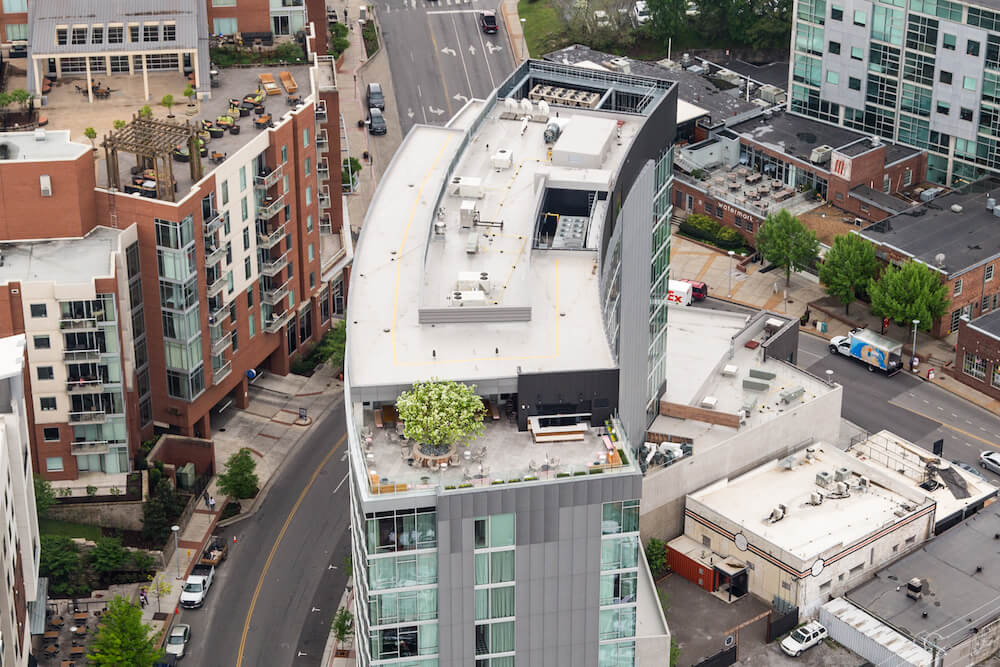The last thing you want to think about with an expensive commercial roof is poking a hole in it. However, roof penetrations are sometimes necessary for other functions in your building. Here is everything you need to know about installing rooftop penetrations the right way.
1. There are many reasons to penetrate a roof.
In general, the quality of a roof is partially determined by its ability to hold up when things try to penetrate it. No company wants a tree or a chunk of softball-sized hail crashing down through its roof, but there are types of penetrations that can add utility or value to your building. Here are just a few types of intentional roof penetrations.
- Chimneys—If you plan to put a fireplace in your building, you’ll need a chimney to help empty the smoke from a fire.
- Skylights—Skylights can dramatically improve the natural light in your building without taking up valuable wall space.
- Exhaust Fans—Exhaust fans can help remove steam, odors, or other unwanted pollutants in your building’s air.
- Vents—Vents suck out moisture or pump air to provide ventilation to a building.
- HVAC Systems—Large commercial heating and cooling units are often kept on a building’s roof, and a penetration will be needed to bring the warm or cool air inside the building.
- Solar Panels—Large solar units for a commercial building are best fastened to a roof using anchors, which put small holes into a roof.
- Pipes and Drains—Some complex pipe systems may be kept on a building’s roof and need entry into the building.
2. Penetrations are best installed during construction.
Planning out roof penetrations during construction will save work and time in installing them. A dedicated roofing company will be able to work with other construction specialists to find the best spots for your penetration and to customize the roof’s construction to best accommodate it.
3. Retrofits are possible with penetrations.
Not everything about a commercial building can be planned right from the outset. If you wind up needing a roof penetration down the road, you can retrofit your roof, but this is when most things go wrong. Penetrating a roof that’s already constructed requires puncturing your “building envelope,” which refers to the materials that seal a building off from the elements. After installing a roof penetration, this envelope needs to be properly re-sealed to protect the building. Poor craftsmanship at this phase can cause disastrous damage, which brings us to our final point.
4. Use a professional roofer.
An HVAC contractor or a skylight installer might tell you that they can penetrate and reseal your roof themselves, but only a specialized roofer knows the best ways to prevent leaks from entering your building. Penetrations are complicated, requiring special metal flashings and seals that few other construction contractors are trained in using. Improper installation can result in corrosion or leaking around the penetration and can result in costly repairs down the road.
If you want to get your roof penetration installed right the first time, contact Maxwell Roofing & Sheet Metal, Inc. today. Our full-service roofing approach offers everything you need for your roof penetration from installation to maintenance.

